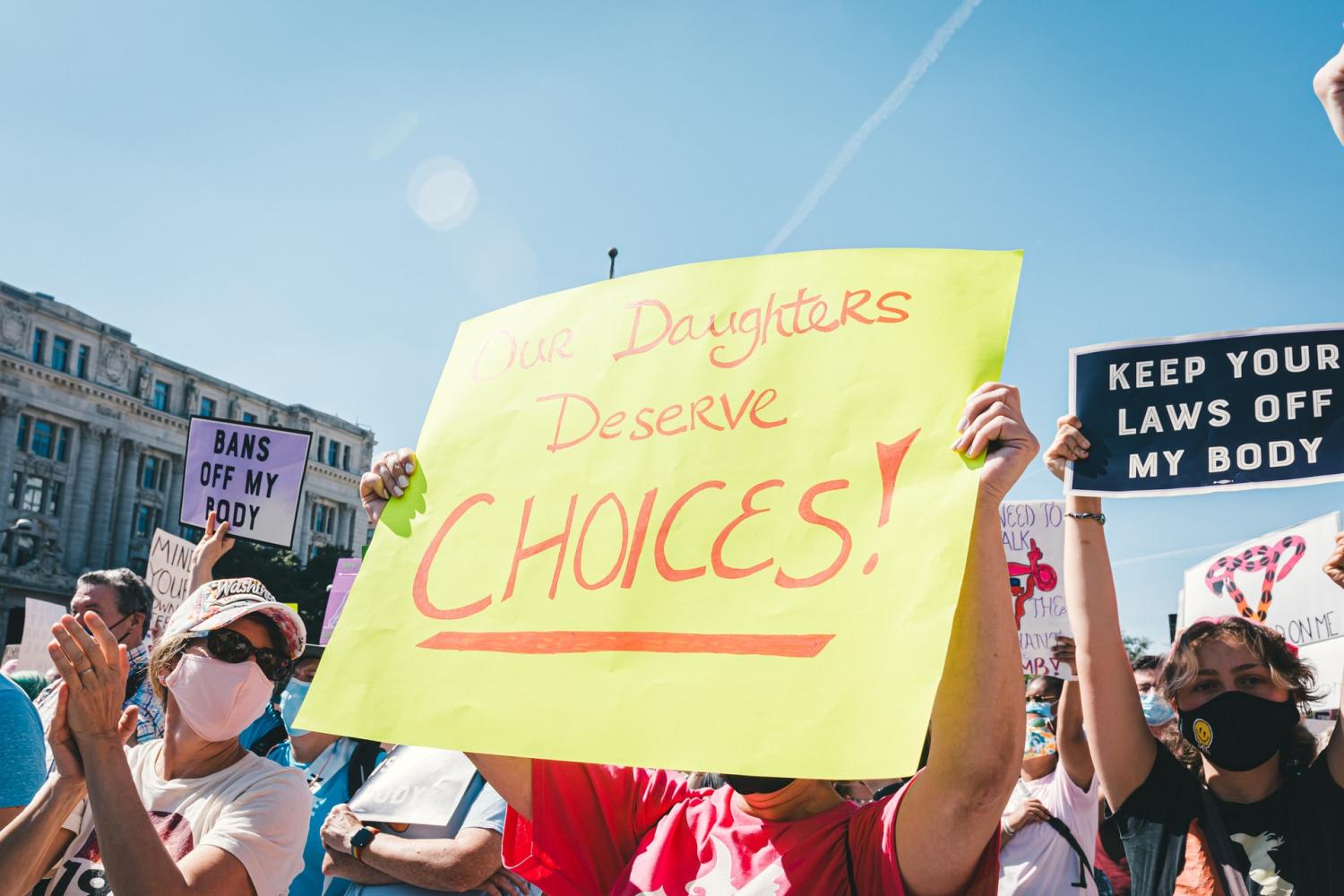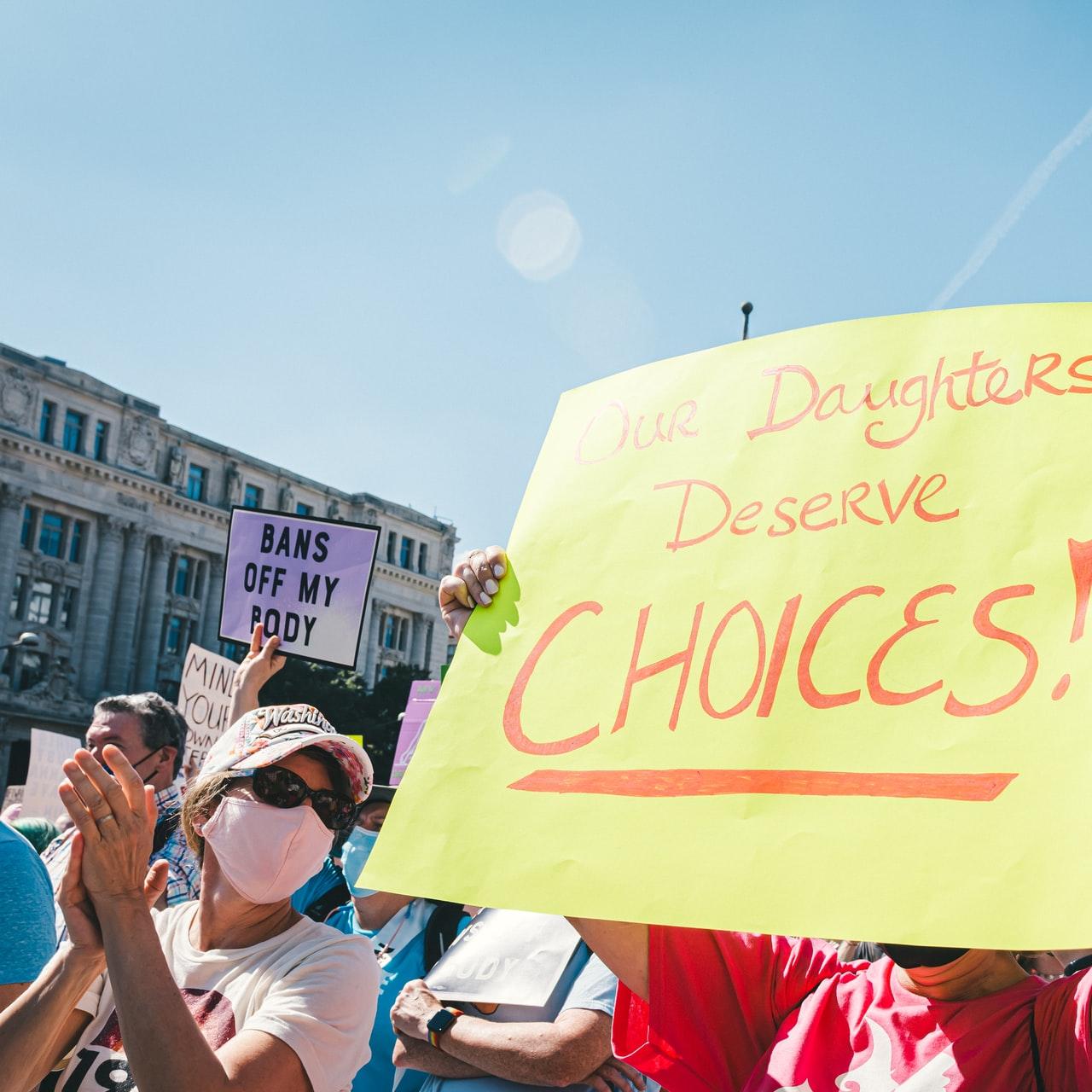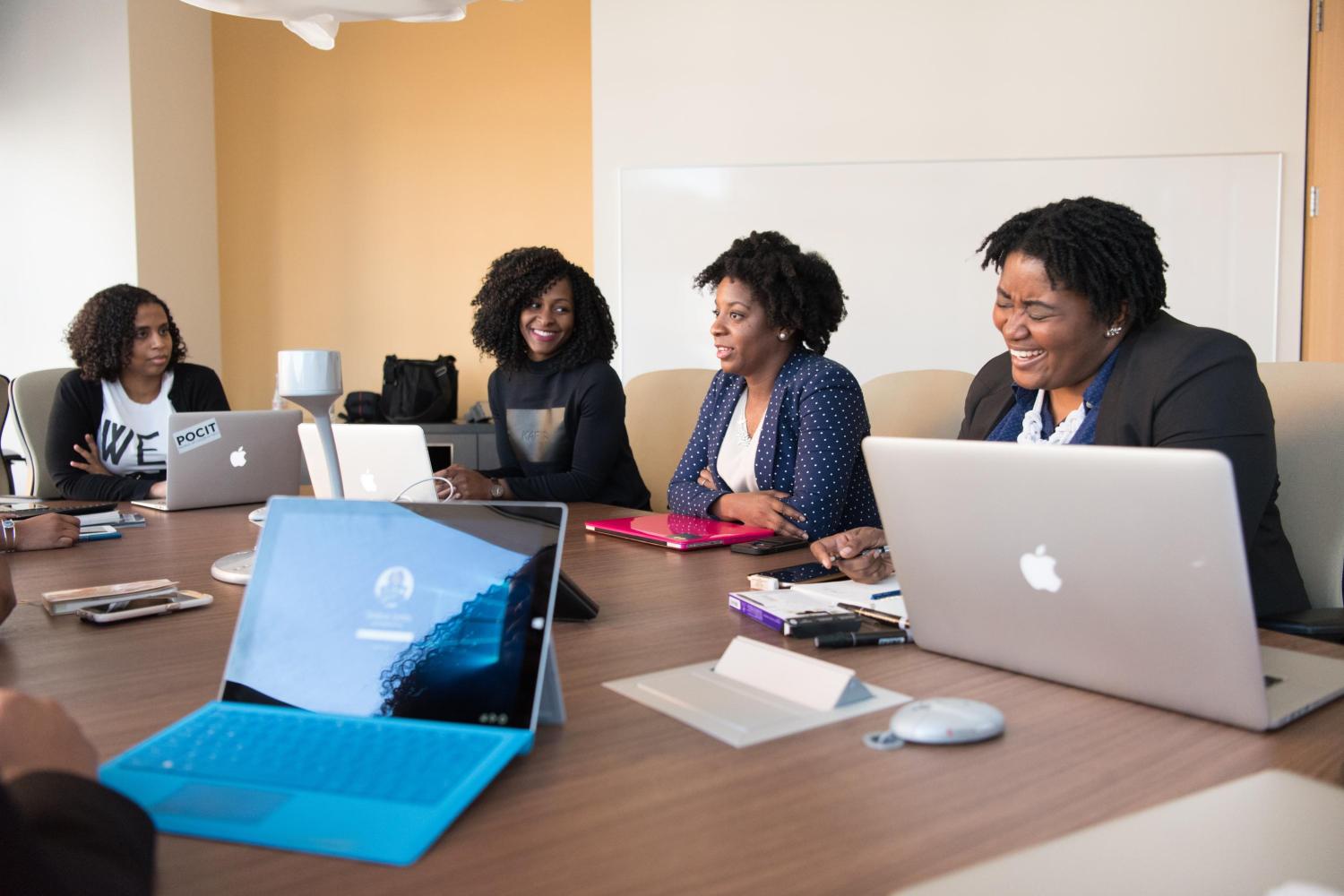Here’s a Guide to Help You Wade Through All the Earth Day Jibber Jabber


Earth Day has a lot in common with Christmas. The latter has different meanings, of course: celebrating the birth of the Christ child, being together with friends and family or simply celebrating the shift of the seasons to winter. Earth Day, on the other hand, has for 52 years been a day for citizens to show their commitment to environmental protection. The messaging for both Christmas and Earth Day, however, has become muddled. In the case of Christmas, the problem has largely been about crass consumerism and messages urging us to buy stuff; in the case of Earth Day, one emerging problem has been about crass consumerism and messages urging us to buy stuff. Earth Day has also become a time for those working within the marketing communications space to pitch sustainability stories that are often confusing and quite honestly, too frequently dubious.
So, if you’re curious about TriplePundit’s coverage of Earth Day and Earth Month, please note that you’re currently reading it: both the start and end.
Going back to all the confusing messages that often surround Earth Day: One company has come up with a glossary that can help sort through the marketing messaging clutter that surrounds such terms as green, eco-friendly, low-impact and plant-positive.
The online grocery shopping platform Hive says it’s got a solution for all the terms that keep appearing before and around Earth Day. The company, which includes subscription boxes as among its services, has pledged to sell and deliver products that only meets its standards, such as ingredient integrity (as in going beyond products described only as “natural”), recyclable packaging, a low-carbon footprint and those goods coming only from companies that have made some form of commitment to social good.
To that end, Hive has recently launched an online dictionary that lays out these terms, helps consumers put them in context and then, this guide offers suggestions on how shoppers can actually gauge whether such products can back up such claims or not.
Take the case of the term “climate-friendly,” which in reality can mean just about anything and nothing at the same time. In this case, if a company is claiming that its products are indeed climate-friendly, it has got to back up its claims, which in this case includes proof of certification including Climate-Neutral Certified and Regenerative Organic Certified.
The same goes for “mindfully made,” a term seen on food and beauty products packaging as well as at brick-and-mortar department stores and online on shopping platforms such as Etsy. To avoid any confusion, Hive suggests checking out products that carry the certification labels from the likes of Fair Trade USA, Fairtrade America or Fair for Life.
Some terms are more difficult to vet, such as zero-waste. When companies make such a claim, they are generally implying that none of the trash that results from its operations makes it to incinerators, landfills or the globe’s waterways. But the very term also suggests the company is taking such an approach everywhere, from sourcing to shipping, at both warehouses and manufacturing facilities. It’s a tough claim to make, with the only certification on this front being the True Zero Waste Certification program. As for the True certification seal, that means a company’s zero-waste pledge has been verified and hence certified that at least 90 percent of is waste is diverted from municipal waste streams.
Hive’s dictionary offers a solid start for consumers to learn about what all these various environmental claims mean, and what people should be searching for when they investigate such commitments. This month, Hive is adding more incentive for people to visit its glossary site to learn about these labels: Through the end of April, Hive says it will donate funds to the Soil Health Institute each time someone shares the page’s link.
Image credit: Akil Mazumder via Pexels
Sustaining the Future: How Organizations Can Embrace a Circular Economy


Organizations across every industry are increasingly expected to proactively review existing business models and processes that have a direct impact on the environment. For many organizations, they have relied on a linear economy approach, extracting resources from the environment to manufacture and sell goods to customers. This approach has been the main way of operating however, the result of this model is found across global landfills and oceans, where discarded goods contribute to ongoing environmental issues, including the release of greenhouse gases such as methane.
As climate risk pressure mounts from regulators, investors, consumers and employees, there is an increasing need for organizations to consider the opportunities found in a circular economy approach - aligning growth with core values and purpose.
Understanding the drivers and principles of the circular economy
The transition to a circular economy is an important journey for all organizations to embrace. Unlike the traditional linear model, the circular economy is designed to reuse material, eliminate waste and help promote a more sustainable environment. Based on three core principles; eliminate, reduce and reuse waste, the push to a circular economy has been brewing for some time as climate change awareness has grown across consumers, finance and capital markets and regulators. Taking a deeper dive into each focus area can help organizations identify and understand the opportunities of a circular future.
Consumers: Today, there is a greater level of climate impact transparency and trust that consumers demand from an organization they choose to do business with. Many leaders have struggled and continue to struggle with the capacity and processes to tackle these consumer demands. According to a GreenPrint survey, 53 percent of Americans never or only sometimes believe a company's environmental claims, and 45 percent say they need a third-party validating source.
Finance and capital markets: Investors are increasingly seeking environmental, social and governance (ESG) exposures for their portfolios which is placing a greater emphasis on how companies approach, report and mitigate their carbon footprint. A recent report from FTSE Russell notes that sustainable investments are now standard globally, with 84 percent of asset owners either implementing or evaluating for sustainability into their portfolios. From a broader global economic standpoint, organizations are also seeing a larger push to a circular economy as studies show doing so offers a $4.5 trillion economic opportunity.
Regulators: Local and national governments are increasingly putting ESG and climate-focused plans in place for industries to abide by. In March of this year, the state of Mississippi passed a law to support advanced recycling, creating new economic opportunities in the state. Nationally, the U.S. Securities and Exchange Commission (SEC) announced its potential plans on climate disclosure mandates. The SEC’s anticipated plans are placing a direct spotlight on public companies and their ESG efforts or lack thereof and revamping them.
How organizations can start their journey
Implementing the principles of the circular economy can allow organizations to have a measurable, positive effect on the environment, but many organizations question where to begin.
Start with what you can control: Organizations can start making changes by taking a closer look at their operational carbon emissions to identify areas for reduction. In addition to common sustainability initiatives like the reduction of energy and water consumption, organizations can begin this step by looking closely at waste reduction opportunities surrounding the use of any operational product or process that causes the emission of carbon gases.
Third-party suppliers: Being environmentally responsible also means that organizations must be aware of their suppliers' involvement. By vetting their suppliers and/or including procurement language in contracts that are in favor of sustainable products and processes, an organization can be proactive in their efforts to mitigate third-party climate impacts. For larger organizations with more influence on their suppliers, this could include implementing emission disclosure requirements as a prerequisite for the purchase of goods.
Design with reduction of waste in mind: Organizations should rethink all of their production and processes and identify areas where they can implement any of the three principles of the circular economy: eliminate, reduce and reuse waste. Specifically, priority should be on the elimination or substitution of any material that can’t be diverted from landfills at the end of the product lifecycle.
The circular future
By empowering organizations to rethink their current processes and implement new tools to save money and create new efficiencies, a circular economy approach can help drive a more vibrant future, but this will require an "all hands on deck" approach to achieve success. With an eye on the circular future, organizations will quickly realize the opportunities of a new approach if they take the necessary steps today to eliminate, reduce and reuse waste.
Interested in having your voice heard on 3p? Contact us at [email protected] and pitch your idea for a guest article to us.
Image credit: Matt Seymour via Unsplash
HanesBrands Reflects on First Year’s Progress Toward 2030 Sustainability Goals


Usually December is the month for reflecting on the past year and setting intentions for the future. For HanesBrands Inc., however, April is that time. That’s because this month the apparel company is updating the website dedicated to its 2030 Global Sustainability Goals, marking progress, challenges and lessons learned while looking ahead at what remains to be done.
Launching the 2030 goals
Based in Winston-Salem, North Carolina, HanesBrands has been making socks, underwear, activewear, shirts, hosiery, shapewear and more for over 100 years. Chris Fox has been a part of HanesBrands' sustainability and corporate responsibility team for nearly two decades and is in his second year as the company’s chief sustainability officer.
“In 2019 we realized we needed to take a step back and look at where we want to go over the next decade,” Fox told TriplePundit. The company collected the relevant benchmarking data before announcing its 2030 Global Sustainability Goals at the end of 2020. The goals focus on three key areas:
- People: By 2030, HanesBrands will contribute to improving the lives of at least 10 million people.
- Planet: By 2030, HanesBrands will reduce Scope 1, 2 and 3 greenhouse gas emissions in accordance with the Science-Based Targets initiative. The company will also look to cut energy and water use by at least 25 percent each, use 100 percent renewable electricity in company-owned operations, and bring landfill waste to zero.
- Product: By 2025, HanesBrands will eliminate all single-use plastics and reduce packaging weight by 25 percent while also moving to 100 percent recycled polyester and sustainably-sourced cotton.
HanesBrands’ commitment to the Science-Based Targets initiative a year ahead of schedule is one point of progress Fox says he’s most proud of. The SBTi requires participating companies to develop specific goals to reduce greenhouse gas emissions enough to limit global warming by 1.5 degrees Celsius. As the SBTi organization explains: “Targets are considered ‘science-based’ if they are in line with what the latest climate science deems necessary to meet the goals of the Paris Agreement.”
While usually a two-year process, HanesBrands set its targets and completed its application in one year.
The difference an owned-supply chain makes
Fox credits HanesBrands’ ownership of much of its supply chain with allowing the company to submit goals to the SBTi so quickly. “What makes us so different in the apparel space is the fact that we own so much of the production capacity, nearly 70 percent,” Fox told us. “Our decisions get translated into action much more quickly than they would if we were contracting out all of our production like many in the industry do.”
As an example, Fox cited two HanesBrands textile mills in the Dominican Republic and El Salvador that converted to biomass-powered renewable energy. By making eight-figure capital investments in biomass technology at its mills, the company has reduced energy usage by 7 percent since 2019 (toward a 25 percent goal by 2030) and saved money as well.
For Fox, supply chain ownership has also uniquely positioned HanesBrands to respond to the unanticipated challenges of the past two years, specifically around increased costs.
“We believe that owning our supply chain puts us in a very different place when it comes to considering sustainability,” he said. “There are initiatives that may cost us more money in material inputs, such as our sustainable cotton program and recycled polyester goals. But because we own so much of the production, we are able to consider those investments because we have the opportunity to capture savings generated from energy and packaging reductions. That said, increasing costs are a challenge for us, as they are for the entire industry.”
Improving lives through Hanes Community Schools
Another difference between HanesBrands and many other apparel companies is that the company’s employees, who it calls associates — rather than contractors — are the ones actually making most of the products. “We have 50,000 manufacturing-level employees,” Fox said. “These are our people and our communities. We are living in the same neighborhoods, sending our kids to the same schools.”
HanesBrands has pledged to contribute to improving the lives of 10 million people through both employee initiatives and philanthropic efforts by 2030. And the company says it has reached 1.4 million people in the first year since launching the 2030 Goals.
The Hanes Community Schools project — currently operating in El Salvador, Dominican Republic and Honduras — is one such example of this employee-neighborhood connection. In 2009, HanesBrands joined with the nonprofit Glasswing International to develop after-school programs to engage schoolchildren in constructive, educational activities.
Many schools in Latin America split days into two sessions to accommodate more students. As a result, children have mornings or afternoons outside structured, supervised learning environments. “Activities in this program range from robotics to glee clubs, English lessons to arts and crafts. In all, there are over a dozen programs available to the students,” Fox said. Over the past 13 years, the Hanes Community Schools project has connected more than 8,000 youth with approximately 3,000 Hanes employee volunteers who act as teachers and mentors.
Most of HanesBrands’ community development work, including the Hanes Community Schools project, has been funded through the company’s Green for Good program, which tackles several of its sustainability ambitions at once.
“With the Green for Good program, we take the leftover materials from our production floors and sell them to recyclers, diverting waste from landfills and generating funds we can then reinvest in the community,” Fox said. Literally one aspect of our sustainability goals — waste reduction — is being used to fund another part, our community development initiatives.”
Lessons learned and looking ahead
Hanes has accomplished a lot in the decades it has focused on sustainability, but there is much more to do — and hitting those 2030 goals will not be easy. “It shouldn’t be,” Fox told us. “We set them aggressively for a reason — to push ourselves to achieve more than we think is possible.”
One consistent challenge for both HanesBrands and others in the industry is developing sustainable solutions for packaging. HanesBrands in particular is looking to eliminate single-use plastics in all product packaging by 2025, but getting there will require solutions the industry doesn’t necessarily have yet.
For example, HanesBrands currently packages all of its products for brick and mortar shipment as a default, when many of these products will ultimately be shipped for e-commerce. “This means that if a consumer orders a bra online, they receive it on a hanger because that same bra might have been shipped to a store,” Fox explained. “This creates waste that can be eliminated, but we as an industry have not come up with a workaround to many of these problems yet. We need figure out how to use less, save money, and reduce and eliminate plastics. This issue is bigger than our company, and we are in the process of setting up collaborations and partnerships with major companies in the retail space to mine for packaging solutions.”
Similarly, the road to sourcing 100 percent recycled polyester and other sustainable materials is also dependent on factors that stretch beyond any one company. “One of the challenges in the sustainable materials space is the reality that there is more demand than there is supply right now — for example, with recycled polyester,” Fox said. “This is having an impact on availability and on cost. And as much as we want to fix these issues quickly, there are market issues we’re managing.”
Overall, although it’s not always simple, pushing beyond what is easily achievable is what society requires — and increasingly what stakeholders expect. And for HanesBrands, “we believe this is the spirit that will drive real change and make a real difference,” Fox said.
This article series is sponsored by HanesBrands and produced by the TriplePundit editorial team.
Image courtesy of HanesBrands
SAP and Accenture Aim for a Circular, Regenerative Economy


With 87 percent of the world’s transaction revenue touching its software at some point, the leading software company SAP is in a unique position to accelerate the transition to a circular economy. To that end, SAP recently introduced a new solution, SAP Responsible Design and Production that is co-developed with Accenture. SAP Responsible Design and Production emphasizes the need for regenerative practices alongside the reduce-reuse-recycle formula.
Two partners positioned to lead on circularity
SAP is known for its leading role in the area of Enterprise Resource Planning (ERP), a field that fosters communication and collaboration between the various branches of a business and its ecosystem. ERP breaks down the silos that define areas of responsibility in a conventional business model, enabling planners to develop whole-of-operations strategies.
Meanwhile, the global professional services firm Accenture has been taking the lead on promoting the circular economy since 2015 when it published the book Waste to Wealth. A follow-up book, The Circular Economy Handbook, came out in January 2020.
According to Peter Lacy, Global Sustainability Services Lead and Chief Responsibility Officer of Accenture, “The circular economy offers a powerful way forward: a massive transformation from the traditional linear ways of doing business to new principles of circularity. It fundamentally decouples economic growth from resource usage and recouples economic growth with societal progress – presenting a much-needed framework for tackling our global challenges. That is why I’m so excited about SAP and Accenture’s partnership. It aims to truly move the needle for our clients while recognizing that we need to go way beyond net zero and carbon to energy, water, waste, deforestation, ocean pollution and indeed protecting biodiversity and being nature positive in our global value chains. The growing focus on climate change and net zero is very welcome, but it’s not enough. Measuring, managing and delivering the circular economy is a big step forward for business.”
Accenture maintains that companies must ensure responsible business practices — not only within their own four walls, but also across their value chains — in order to meet changing consumer expectations. “It’s no longer enough for companies to focus only on what they control directly,” the company asserts. “Customers will hold them responsible for any slip ups around their products, even when those mistakes are made by a partner company.”
These shifting consumer expectations are also hastening the transition toward circular models. “Evolving consumer attitudes are one of the key factors driving the growing importance of the circular economy,” a recent Accenture analysis reads. “People now want to use more sustainable products that are recycled and bio-based. Meanwhile, brand owners are watching evolving consumer preferences on circularity and taking a leading position in making voluntary commitments to circular economy goals. Investors are increasingly likely to factor in a company’s impact on society and the environment to determine its worth.”
What is SAP Responsible Design and Production?
The world creates over 2 billion tons of waste each year, at least a third of which is not reused or recycled, contributing to more than 45 percent of global carbon emissions and 90 percent of biodiversity loss. Businesses that continue along this pathway will find themselves reacting to new regulations instead of proactively running ahead of the curve.
Extended producer responsibility, or EPR, is among these emerging policy approaches aimed at curbing the waste crisis. As the name implies, extended producer responsibility makes manufacturers physically or financially responsible for the entire lifecycle of their products, including the waste they create. EPR legislation has now become a global trend, affecting industries including consumer packaged goods, retail, fashion, chemical, technology and automotive, SAP observes.
More than 400 EPR schemes and plastic taxes are in place or planned around the world. Generally, these schemes require companies to pay fees based on their packaging or plastic volume in a market, with funds going to support local waste management, collection and recycling activities. But each locality does this in their own way, creating a market-by-market challenge for large producers. As the regulation, tax and EPR fee landscape grows increasingly complex, manual data collection, analysis and reporting cannot keep up.
Stéphanie Guimbellot, managing director at Accenture and global lead for SAP Sustainability and Innovation, added that “Because SAP Responsible Design and Production directly leverages data from core ERP processes, it enables determining waste compositions and calculating EPR fees across numerous product lines as well as adhering to a growing number of different extended producer responsibility declaration schemes.
In response to these policy developments and increasing demand from more informed, environmentally aware consumers, a growing number of companies and their executives have signed on to public environmental pledges, including commitments to curb plastic pollution.
Still, no single company or industry can achieve circularity on its own — and the growing complexity of the regulatory landscape requires new solutions to properly manage costs and minimize risk. By analyzing the impacts associated with plastic tax and EPR regulations and improving design choices, technology can help companies to reduce waste, drive down costs and mitigate fees to provide significant financial benefit.
The new SAP Responsible Design and Production solution helps customers with the sustainable design and responsible management of materials and products so that they can accelerate their transition to a more circular economy: cutting waste and other forms of pollution, reusing and reclaiming materials, and regenerating nature.
The cloud-based solution gives companies greater visibility into the material flows in their processes — including raw materials, packaging and downstream impacts — illuminating opportunities to reduce waste and design products to be sustainable from the start. Importantly, companies can also use the platform to track and comply with rapidly changing regulations, including those related to EPR.

Greater visibility helps companies eliminate packaging waste
It is complicated — and expensive — to redesign packaging across thousands of products sold in various markets around the world. The up-front cost of making changes may have deterred companies in the past, but new regulations are tipping the scale. One study estimates that EPR costs for product packaging could exceed $3.5 billion annually in the U.K. alone, Natasha Pergl, lead for global circular economy at SAP, observed in a company blog.
Simply put: These are not small numbers, and it’s only going to get more expensive for companies to continue creating waste. “Do the math, and you’ll see the global impact,” Stephen Jamieson, the company’s global lead for circular economy solutions. “Some of the larger manufacturers produce thousands of tons of materials each year. In these markets, you’re talking about very meaningful numbers.”
Forward-looking companies have already proven that the up-front investments pay off. Unilever, for example, estimates it has cut costs by $1.5 billion since 2008 by improving efficiencies in factories and using fewer materials. As more companies agree, co-developments like the SAP Responsible Design and Production platform can help.
With access to a birds-eye view of their operations, overlaid with public policies, companies can identify the right tradeoffs and move their products closer to circularity. Some may see opportunities to transition their plastic packaging toward resins that are more readily recyclable, for example, while others may find ways to incorporate recycled plastics, eliminate unnecessary single-use packaging altogether, or move toward reuse and re-commerce models.
Beyond product and packaging design, embedded analytics enable EPR experts at large global companies to accurately comply with packaging regulations in each market they serve and allow for people like chief sustainability officers to see progress toward company commitments, Pergl explains.
Further, the fact that the solution is co-developed with the combined expertise of SAP and Accenture offers several benefits, including a faster time-to-market for new releases and an opportunity for the companies’ vast network of clients to offer feedback that will improve the product.
The bottom line
“There is inherent complexity in designing products that eliminate waste and use responsible materials,” Scott Russell, executive board member and head of customer success at SAP, explained in a statement. “To become regenerative, companies need to manage impact on the environment (e.g. deforestation, water) and social capital (e.g. ensuring living wages, addressing skills, training and digital inclusion),” SAP added.
In the end, leadership will determine how quickly companies can adapt to the circular, regenerative economy of the future. CEOs who stake their company’s reputation on environmental pledges will need to ensure the words on paper come to life in the form of deep, substantial changes in the way they do business. This new solution could be an important tool in their toolkit.
This article series is sponsored by SAP and Accenture and produced by the TriplePundit editorial team.
Image credit: malp/Adobe Stock
Airplane Tickets Don’t Solve Corporations’ Abortion Access Problem


Corporate leaders have long decried government regulation and overreach. However, in recent years they have been more than willing to tolerate government regulation and overreach in the area of individual rights. As a result, many of their own employees are now under threat of violence, and their companies’ own diversity, equity and inclusion (DEI) programs are revealed as just another corporate public relations exercise.
The party of big business has gone rogue
Millions of corporate employees and their families are seeing their basic civil, social and human rights picked apart in real time, whether from new voter suppression laws, new anti-trans laws, the banning of books in public schools and libraries, or the backlash against teaching facts about American history — or all of these, all at once.
These legislative developments are linked to the rising tide of extremism among Republican policy makers, many of whom have enjoyed significant corporate support over the years. It is no accident that they are colored by a tinge of hysteria, considering the influence of the extremist QAnon cult. QAnon-linked conspiracy theories have gained significant currency among Republican voters, despite the cult’s growing reputation as a Russian propaganda mill that revolves around accusations of pedophilia and centuries-old anti-Semitic tropes.
Editor's note: Be sure to subscribe to our Brands Taking Stands newsletter, which comes out every Wednesday.
Writing for U.S. News and World Report last February, reporter Susan Milligan summed up the tenets of the QAnon cult:
“Here's a theory: Satan-worshipping pedophiles running a global sex-trafficking operation control the U.S. government, media and financial institutions. A storm is coming to sweep away the elites and restore the rightful leader of the country. And things are so off track, true American patriots may have to resort to violence in order to save the country.”
As ridiculous as that sounds, that is the belief system affirmed by about 25 percent of self-identified Republicans who answered a survey of those tenets last year. The survey was undertaken by the non-partisan Public Religion Research Institute last year, which also noted that exposure to right wing news media was the most accurate indicator of belief in the central tenets of QAnon.
The affiliation of QAnon with right-wing media helps to explain why its tenets have taken hold among Republican legislators as well as rank-and-file voters. According to a report last week by the startup media organization Grid News, dozens of Republican candidates for office in the 2022 election cycle are linked to one or more QAnon tenets.
“In sum: QAnon appears to be a growing political movement with increasing clout and significant mainstream appeal,” Grid News reported.
The ongoing threat to abortion access
Concurrent with the QAnon-fueled legislative chaos is a fresh, cascading torrent of new laws that pander to the gun “rights” movement, at the expense of the health, safety and lives of others.
Most at risk are pregnant people, who are more likely to die by homicide than other causes, often at the hands of a partner.
That may seem difficult to believe, considering that pregnancy is itself a significant health risk. However, a growing bank of fact-based information shows that pregnant or recently pregnant people are at higher risk of homicide as well as suicide and drug overdose.
To the extent that guns in the home increase the risk of both homicide and suicide, the health and safety impact of lax gun control falls disproportionately on pregnant people. The risk of violence rises even more for younger pregnant people and people of color.
Violence and the corporate response
Against this backdrop, the recent spate of new anti-abortion laws takes the unmistakable form of violent repression. As much as the anti-abortion movement would like to portray itself as “pro-life,” in reality it is an anti-pregnancy movement that targets non-binary people and men as well as women.
Business leaders who now decry the threat to the health, safety and mental well-being of their employees have only themselves to blame. As a group, they sat silent or actively supported Republican candidates who rode into office on a triple wave of voter suppression, gun rights and the push to curb abortion access.
Now that the legislative chickens have come home to roost, it is too late. The only response undertaken by corporate leaders is to offer financial support for employees who need to travel out-of-state for an abortion, due to anti-pregnancy laws in their home state.
Salesforce set that bar last September, in response to new anti-pregnancy laws in Texas. That certainly was no help to the many pregnant people in Texas who don’t work for Salesforce. Nor did it help many millions more in the growing number of states where legislators are also passing new anti-pregnancy laws, in anticipation of a U.S. Supreme Court decision that could overturn the protections for pregnant people outlined in the 1973 Roe v. Wade decision.
Nevertheless, Yelp and Apple have followed the Salesforce tickets-for-abortion example, as have several other leading corporations.
That won’t make a difference. Salesforce, Apple, Yelp and the others appear to forget that they are headquartered in the U.S.A., not in another nation where Western corporations must tread carefully to avoid conflict with cultural and legal norms.
Perhaps that is the point, after all. The U.S. is becoming another nation – or it will, if the QAnon cult continues its takeover of the Republican party.
In a related sign that the fox has already taken over the henhouse, the U.S. Supreme Court – where the majority currently consists of Republican-affiliated Justices – is on the verge of overturning state-based gun control laws.
Corporate leaders can dispense all the plane tickets they want to their own employees. That won’t make a difference in the 2022 election cycle, and pregnant people will continue to pay the price of that indifference.
Image credit: Gayatri Malhotra via Unsplash
We’re Being Played When It Comes to Inflation, Says Corporate Watchdog


With prices rising 8.5 percent over the past year, it’s an understatement to say it’s scary out there for many Americans as they face difficult budget choices day-to-day due to inflation. But a recent report from the watchdog group Accountable.US shows that for many companies, especially retailers, these are actually halcyon days unlike anything seen in decades.
Past history suggests the U.S. president currently residing in the White House will receive the lion’s share of blame over any economic jitters, including inflation (witness Richard Nixon, Gerald Ford and Jimmy Carter during the 1970s and George H. W. Bush in 1992). But the numbers don’t lie: The current volatility is not only about supply chain disruptions, the war in Ukraine or the pandemic, but it's also about America’s largest retailers doing far more than only passing along their costs to consumers.
Editor's note: Be sure to subscribe to our Brands Taking Stands newsletter, which comes out every Wednesday.
Researchers at Accountable.US concluded that the largest U.S. retailers together reaped 2021 profits that surged to $99 billion. Meanwhile, payouts to shareholders in the form of stock buybacks and dividends reached $79 billion last year, about a $45 billion increase from 2020.
“Many of the nation's largest retailers are exploiting the situation to inflate their profits,” independent journalist Judd Legum wrote in his Popular Information newsletter, noting that during 2021, U.S. corporate profits in total roared upward by 25 percent to more than $2.8 trillion, an increase not seen since 1976.
If you don’t believe the numbers, listen to corporate earnings reports. The researchers at Accountable.US show how the terms CEOs and CFOs have used during earnings calls are largely couched and toned down; after all, no one wants to admit they are price gouging or taking advantage of what’s happening in global markets. But terms such as “pricing strategy” and describing inflation as a “major opportunity for us” to “adjust” (i.e., “increase” prices) are on the record. Those aren’t terms we see on store signs or online shopping portals.
As Accountable.US sums up, “Overall, companies in the S&P 500 saw near-record operating margins in 2021 because they were able to raise prices.” Retailers in particular benefitted as consumers opened their wallets after spending the previous year sheltering in place. Retail spending so far is projected to increase by 6 percent to 8 percent during 2022.
The companies on which Accountable.US focused reads like an A-to-W list of America’s largest retailers, with the report centered on the actions of retail brands such as Amazon, Costco, CVS, Dollar General, Home Depot, Kroger, Lowes, Target, TJX Companies and Walmart.
Not all companies are using inflation as a ruse to squeeze consumers. Take the mini market staple, AriZona iced tea, which is still 99 cents and has been for almost 30 years. The company’s founder just assured NBC’s Today show that the price will remain the same; incidentally, his net worth is estimated at about $3 billion.
Viral stories of AriZona aside, however, the news networks are for the most part offering their readers and viewers a much different narrative about inflation.
“There is a lot of coverage of inflation in the media. Why do you seldom hear about the relationship between price increases and corporate profits? Well, many media outlets rely on advertising from the same corporations that are increasing prices,” Legum observed.
Image credit: olieman.eth via Unsplash
United Airlines CEO’s Straight Talk on Sustainability Irks Competitors


United Airlines CEO Scott Kirby admits to angering some of his competitors when the carrier committed to becoming 100 percent green by 2050 without relying on traditional carbon offsets.
Battery-powered aircraft and tree planting are among the sustainability bubbles Kirby burst during an interview at the Reuters Responsible Business USA event in Brooklyn, NY earlier today.
“I just can’t stand the hypocrisy and putting a fig leaf over it and pretending to solve it as a marketing initiative when you know you haven’t,” Kirby told an audience of corporate sustainability professionals.
On carbon offsets, Kirby said there was not enough room on earth for the forests required to offset emissions from commercial aviation. “We’d starve to death” due to the lack of available land for food crops.
While acknowledging that United has invested in zero-emission aircraft engine technology, Kirby said the only plausible use would involve short-haul routes.
“The most emissions are big airplanes flying long distances,” he said, countering that the weight of batteries would preclude this a for New York to India flight with 300 passengers.
Carbon sequestration and sustainable jet fuel are far more feasible solutions, but each requires political support that is challenging to achieve with lawmakers focused on the next election cycle rather than the long-term health of the planet, said Kirby, a father of seven who talks about his commitment to leaving a healthy planet for his children.
Wind and solar faced similar challenges decades ago but have since been commercialized and are working at scale as replacements for fossil fuels, said Kirby.
“It becomes cost competitive but not on day one,” Kirby said of sustainable jet fuel, which is “almost doesn’t exist today” and is challenging to produce with current government subsidies in place encouraging refiners to include ethanol in gasoline.
President Biden’s failed Build Back Better bill, even when pared down, would likely include provisions encouraging sustainable aviation by subsidizing greener jet fuel.
On carbon sequestration — the process of capturing and storing atmospheric carbon dioxide — Kirby is more optimistic.
“Carbon capture is the only scalable technology that we have today that can actually solve the climate problem,” he said. “It’s just a question of, ’Are we as a globe willing to spend the money?’ A solution more probable in the short term is setting a price for carbon emissions, he said. “My view is that the simple way to solve this problem is a carbon tax.”
United’s chief executive also aimed criticism at its primary regulator, the U.S. Federal Aviation Administration, for exacerbating the climate crisis by failing to eliminate “zig-zag” flight routes rather than the shortest distance from point to point.
“The biggest low hanging fruit is air traffic control. We still fly highways in the sky… laid down 100 years ago. We waste fuel by not flying in a straight line, and we could.”
Image credit via United Airlines/3BL Media
Ceres, SEC Leaders Talk About the Bridge to Expanded Climate Disclosure


In the shadow of the Brooklyn Bridge today, corporate sustainability professionals received an update from the head of the U.S. Securities and Exchange Commission (SEC) on which companies would be required to disclose so-called Scope 3 greenhouse gas emissions.
Of the 1,600 large U.S.-based public companies characterized as “accelerated filers” by the SEC, “a fair number” would have to report on Scope 3, SEC chair Gary Gensler said during a Reuters sustainability conference. Scope 3 encompasses not only a company’s own emissions, but also those of third-party partners both upstream and downstream.
A public comment period began in March when the SEC published proposed climate disclosure rules. More than 5,800 comments have been filed as of press time.
“Companies and investors alike would benefit from clear rules of the road,” Gensler said. “We’re trying to build upon that.”
Pushback over rules mandating Scope 3 emissions has clearly irked some business leaders pushing for accountability in the face of a looming climate crisis.
“We have a bus coming at our kids. Climate is that bus that’s coming fast and furious, and we’ve got to get in front of it,” said Mindy Lubber, CEO and president of the sustainability nonprofit Ceres, adding that an automobile rental company needs to be held accountable for Scope 3 emissions for its 5,000-car fleet. “All the SEC is saying is measure.”
“Data is a start. We’ve got to move at a pace and speed we’ve never done before,” Lubber continued during an on-stage interview at this week’s Reuters Responsible Business USA event in New York.
Threats of potential litigation aimed at the climate-related disclosure rules should not dissuade the SEC from action, said Lubber, who both applauded companies setting science-based targets and warned against making empty gestures that give the appearance of climate action.
“Words and small steps are equivalent to nothing,” she said. “Over the past few years, we’ve seen a revolution from cute green teams at the office to thousands of companies committing to net zero.”
Image credit: Magnus Andersson via Unsplash
Numbers Don’t Lie on Diversity and Inclusion, Or Do They?


With regard to almost anything — your bank balance, your IQ score, the number on the bathroom scale — “they” say that numbers don’t lie. But when it comes to a corporation’s diversity and inclusion evaluation, numbers have a way of representing less of what reality reflects and more what a corporation wants the public to perceive it to be.
TriplePundit recently examined three companies' demographic profiles and found varying indices being reported, such as dollars and cents and participation rates versus people. Only one company boldly asserted its diversity by counting noses.
First, the good news: Siebert Williams Shanks (SWS) is an independent non-bank financial services firm with headquarters in New York and Oakland. SWS has more than 125 employees spanning 19 offices in the U.S.
As the largest women- and minority-owned investment banking firm in the U.S., SWS is 61 percent women-owned, 92 percent minority-owned, 57 percent Black, Indigenous and People of Color (BIPOC), and 32 percent of the labor force is female.
And its successful efforts to achieve diversity have not gone unnoticed in the industry. SWS was recently named the International Finance Review’s (IFR) Inaugural U.S. Diversity & Inclusion House of the Year. SWS was ranked as the top D&I firm in co-manager roles on U.S. investment-grade transactions in 2021 and was named senior manager on the Environmental, Social and Governance (ESG) Green Deal of the Year with Newark Public Schools.
Adding credence to the notion that a diverse workforce is good business, its corporate client base includes 74 companies within the Fortune 100. SWS is also ranked as a leading co-manager of investment-grade corporate debt for the past 10 years. Under the leadership of CEO and President Suzanne Shank, SWS was the first MWBE (minority- and women-owned business enterprises) to rank among the top 10 U.S. underwriters of municipal bonds.
Is it due to the manageability of a smaller workforce, as opposed to a Google or Amazon, that SWS is able to produce such good results? Maybe. But consider that what is being reported is what is important — the actual percentage of people who occupy the chairs, based on race and ethnicity descriptors in line with those utilized by leading data analysts.
Google reports dollars and time spent on D&I. In 2014, Google.org launched a Gender Equality Portfolio that was said to have spent $55 million to create economic empowerment for women and girls by 2020. In 2015, Google.org announced a racial justice portfolio that by 2020 was predicted to spend $104 million in grants and 25,000 pro bono hours to advancing equality. In 2017 it was announced that the supplier diversity program had spent $1 billion cumulatively to promote minority-, women-, veteran-, disabled- and LGBTQ-owned businesses. In 2019, Google reported that 50 percent of its employees had completed unconscious bias training. (Was this a milestone, or why just 50 percent?)
And according to the report, 4.4 percent of Google’s U.S. employees were “Black+,” which includes workers who identify as more than one race, one of which is Black. That is far below the national average of 12.3 percent, and 9.1 percent for digital publishing and search companies, according to the Bureau of Labor Statistics.
Black "plus?” Google collects data for Asian and Latinx also. The problem with these unique categories is in not being able to contrast those demographics to other entities like the U.S. Census Bureau or the Bureau of Labor Statistics that don’t use similar descriptors. The 2021 report includes a legend explaining what these “plus” categories include.
In early March, a former employee at Google sued the company, claiming it systematically discriminated against Black workers by placing them in lower-level jobs, underpaying them and denying them opportunities to advance.
It will be interesting to see what numbers Google presents to legally defend itself.
Amazon is a similar hulking giant when it comes to having a large workforce — some 1.6 million employees globally as of 2021. And Amazon has its own employee complaints such as low pay, unequal opportunities for advancement, short break times and lack of paid time off for injured workers.
Recently, in an amazing David and Goliath moment, Amazon workers at their Staten Island warehouse location won the vote to unionize. It says something about the earnestness of the employee base to improve working conditions and realize this type of victory over a well-funded behemoth.
Workers are demanding an hourly wage of $30, up from a minimum of just over $18 per hour offered by the company. The estimated average wage for the borough is $41 per hour, according to a similar U.S. Census Bureau analysis of Staten Island’s $85,381 median household income.
And although Amazon was recently voted the No. 1 place to work by LinkedIn in terms of advancement, demographics show that while more than 60 percent of the hourly associates at the Staten Island facility were Black or Latino, most of its managers were white or Asian.
No, the numbers don’t lie, but accuracy depends on asking the right questions. Corporations would take a giant leap toward authenticity in their corporate responsibility reporting by standardizing basic goals and measurements.
Image credit: Christina Morillo via Pexels
Salesforce Ramps Up Investments in Global Fight Against Climate Change


Salesforce is giving a total of $11 million to 12 global nonprofits in the first round of donations from its $100 million Ecosystem Restoration and Global Justice Fund. The donations, which were announced April 12 at the company’s Net Zero Summit, support key programs that have embarked on various strategies to tackle climate change, including ones that enhance natural carbon sinks, protect biodiversity and create green jobs.
“We believe that philanthropy can be a powerful tool in fighting climate change,” said Naomi Morenzoni, senior vice president of philanthropy at Salesforce, in a public statement. “Climate change impacts everyone, and it disproportionately affects the world’s most vulnerable communities. Through our philanthropic donations, we aim to support organizations that work with local communities to find meaningful, nature-based climate solutions.”
The organizations receiving the funds include American Forests, the Arbor Day Foundation, Conservation International, Fundación Natura, the National Fish and Wildlife Foundation, One Tree Planted, Restor, Save The Bay, the Nature Conservancy, the Ocean Foundation, Wetlands International, and the World Resources Institute.
A shift from traditional philanthropy
“Our investments are focused on locally-led innovation and supporting projects with multiple impacts,” Morenzoni told TriplePundit. “We will be measuring the impact of these donations through metrics such as number of trees and mangroves planted, metric tons of carbon dioxide reduced, and the economic value of ecosystem services provided.”
In vetting these organizations, “We worked with them to understand what kind of support would be most meaningful and where they would be able to infuse our capital,” Morenzoni said.
She added that Salesforce looks to support “trusted organizations that work closely and have longstanding relationships with local communities.”
“We spend a lot of time doing deep listening with our partners to understand where our dollars can have the greatest impact,” Morenzoni explained. “We also have regular check-ins with our partners to learn how projects are going and assess our investments.”
Philanthropic donations generally provide “risk-tolerant capital” to nature-based climate change solution projects, about half of which fail, Morenzoni claimed.
“Philanthropy can play a distinct role in supporting early-stage innovations that have immense potential, but no guarantee,” she said. “The projects may not always pan out as expected, but if they support the understanding of what works or doesn’t work when it comes to climate innovation, it’s helping to move us forward.”
Supporting the climate change fight on the ground
Jad Daley, president and CEO of American Forests, said the Salesforce donation is “game changing” for the nonprofit in several ways. For example, the funds will allow for the extension of the organization's Tree Equity Score, which calculates how much tree canopy and surface temperature align with income, employment, race, age and health factors in the United States. In addition, American Forests said it will develop a Tree Equity Score program for the United Kingdom to serve as a pilot for other countries. Other initiatives include the opening of a new Hawaii field office to accelerate reforestation efforts there, as well as expanded development of climate-informed reforestation of lands lost to forest fires across the western U.S.
“We are also using Salesforce’s leadership to draw in other corporate partners and philanthropies who share these goals,” Daley told TriplePundit. “That support covers a wide range of needed investment, from science and planning, workforce development, and coalition building to funding the actual costs of tree-planting projects.”
Further, the funds from Salesforce will enable the World Resource Institute’s (WRI) Global Restoration Initiative to expand its efforts to support small- and medium-scale enterprises (SMEs) working in sustainable agriculture and forestry.
“Less than 10 percent of the SMEs in developing countries get the capacity and capital they need, compared to more than 60 percent in developed nations like the United States,” said Sean Dewitt, WRI’s global restoration initiative director.
A focus on climate action in the Global South
WRI launched its Land Accelerator in 2018 to build the capacity of hundreds of entrepreneurs working to restore degraded forests and farmland across Africa, South America and South Asia. So far, Land Accelerator graduates have received more than $2 million in seed capital funding, improved the livelihoods of more than 10,000 people and brought 30,000 hectares under restoration, Dewitt said.
“With local communities managing more than 9 percent of land across India, and Indigenous people safeguarding 12 percent in Brazil, organizations that engage these communities will be at the forefront of the growing restoration industry,” he added. “Salesforce funding allows us to deploy the Land Accelerator to target micro enterprises in India and mid-growth SMEs in Brazil.”
Both Dewitt and Daley said their nonprofits will be communicating with Salesforce on a regular basis to report on the progress of their work addressing climate change.
Within its own ranks, Salesforce says it is tying executive bonuses to progress made in advancing the company’s initiatives in sustainability and equality. In February, Salesforce announced that it would tie a portion of executive variable pay for executive vice presidents and higher within its organization chart to four environmental, social, and governance (ESG) measures to build greater accountability and accelerate the company’s various social impact and sustainability initiatives. For this fiscal year, the measures at Salesforce focus on equality and sustainability.
Image credit: Ron Lach via Pexels